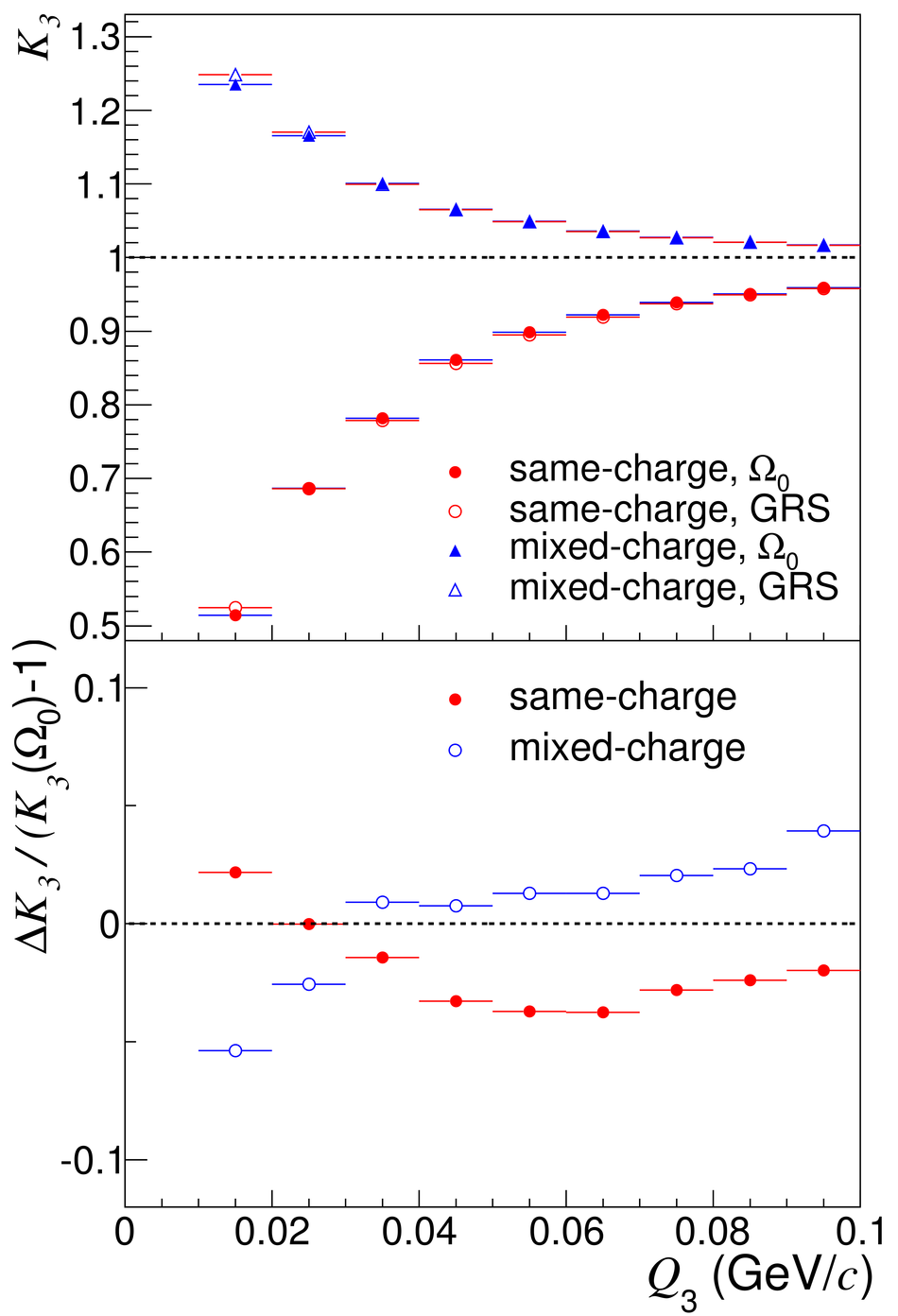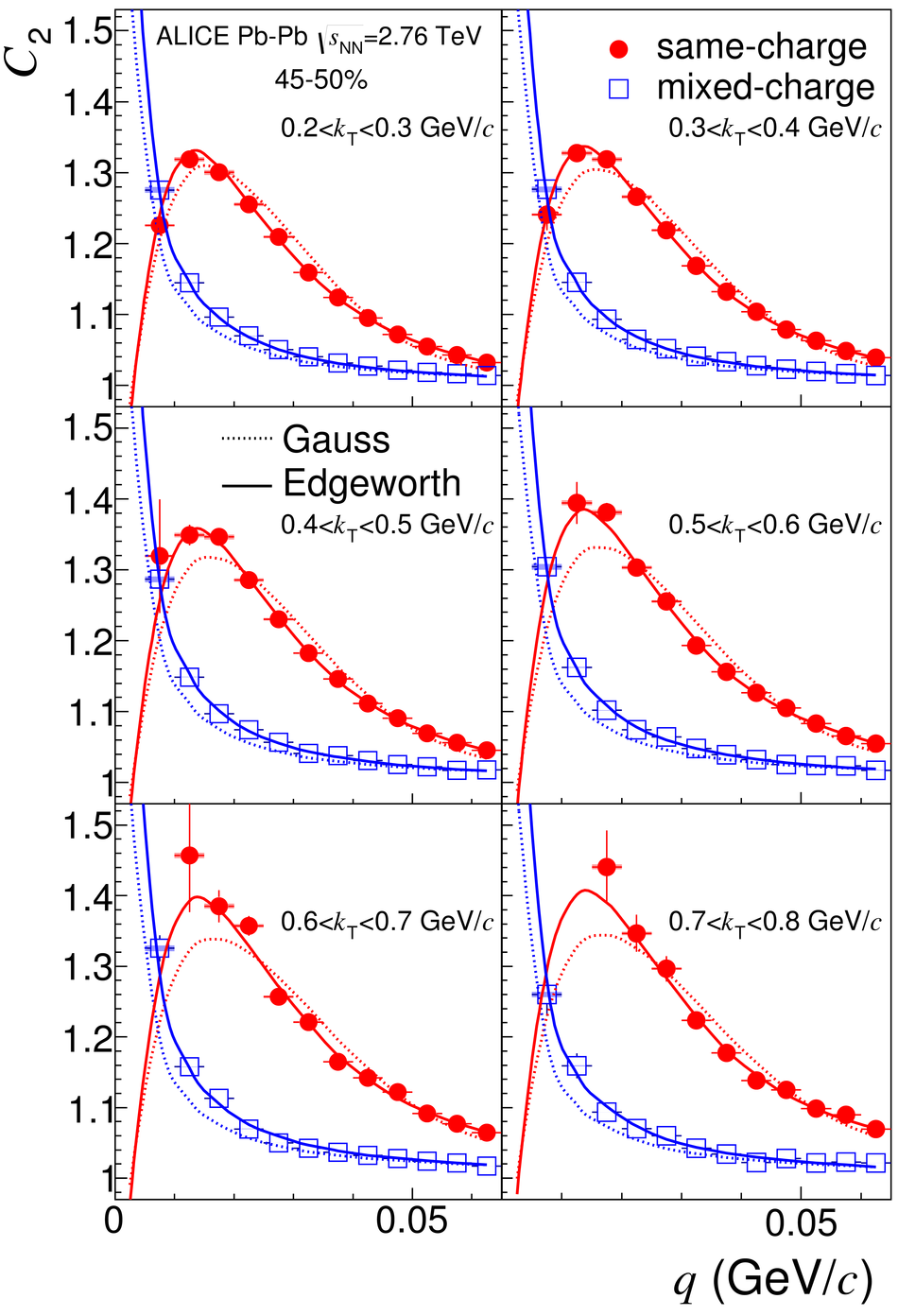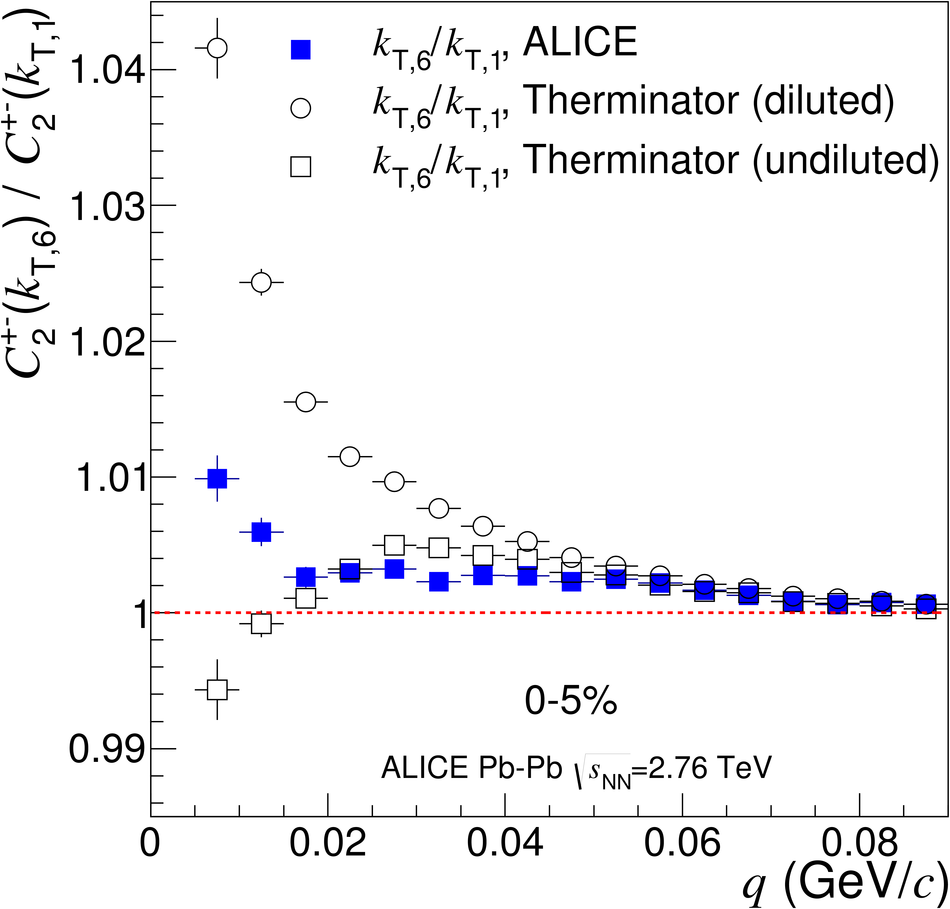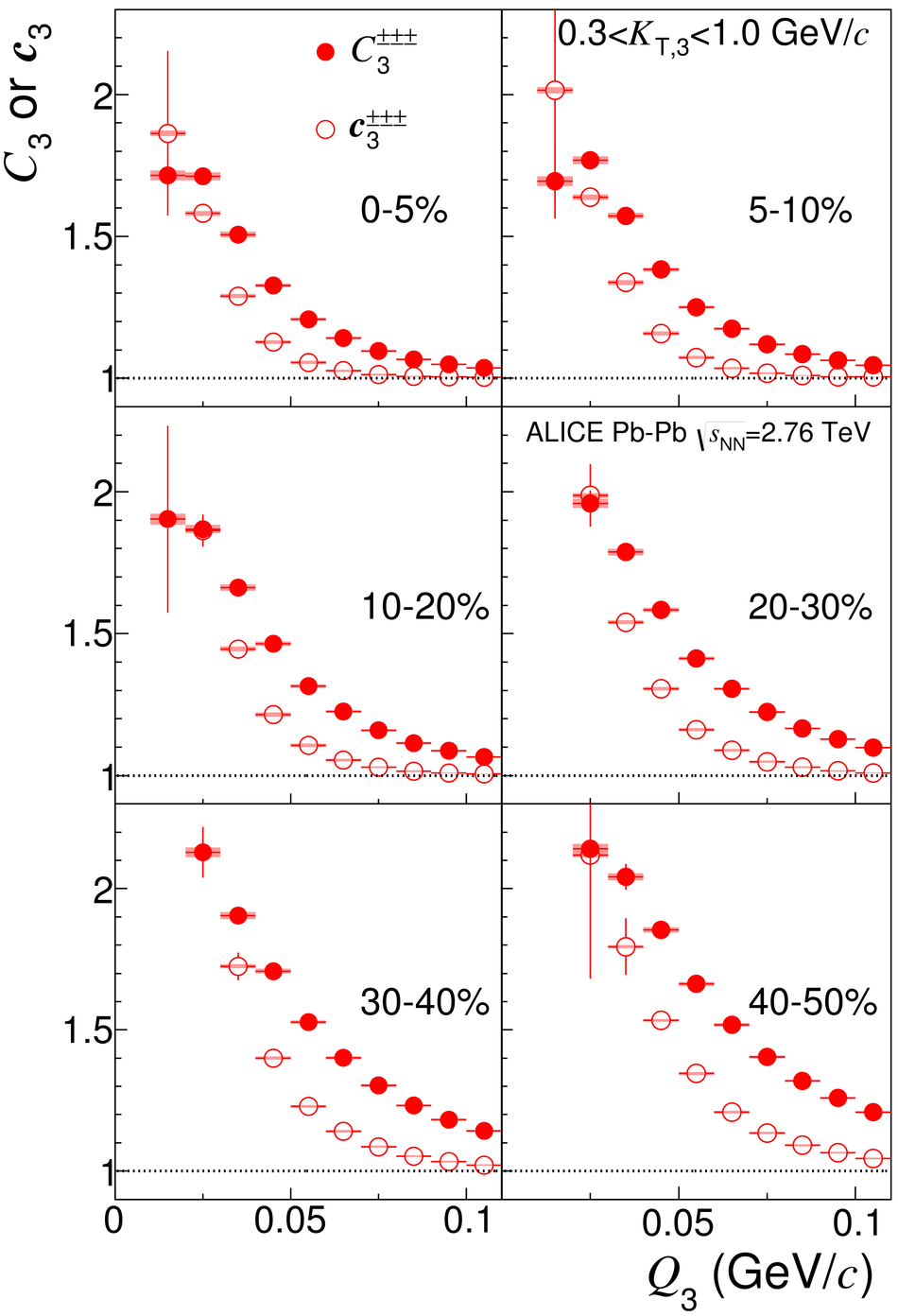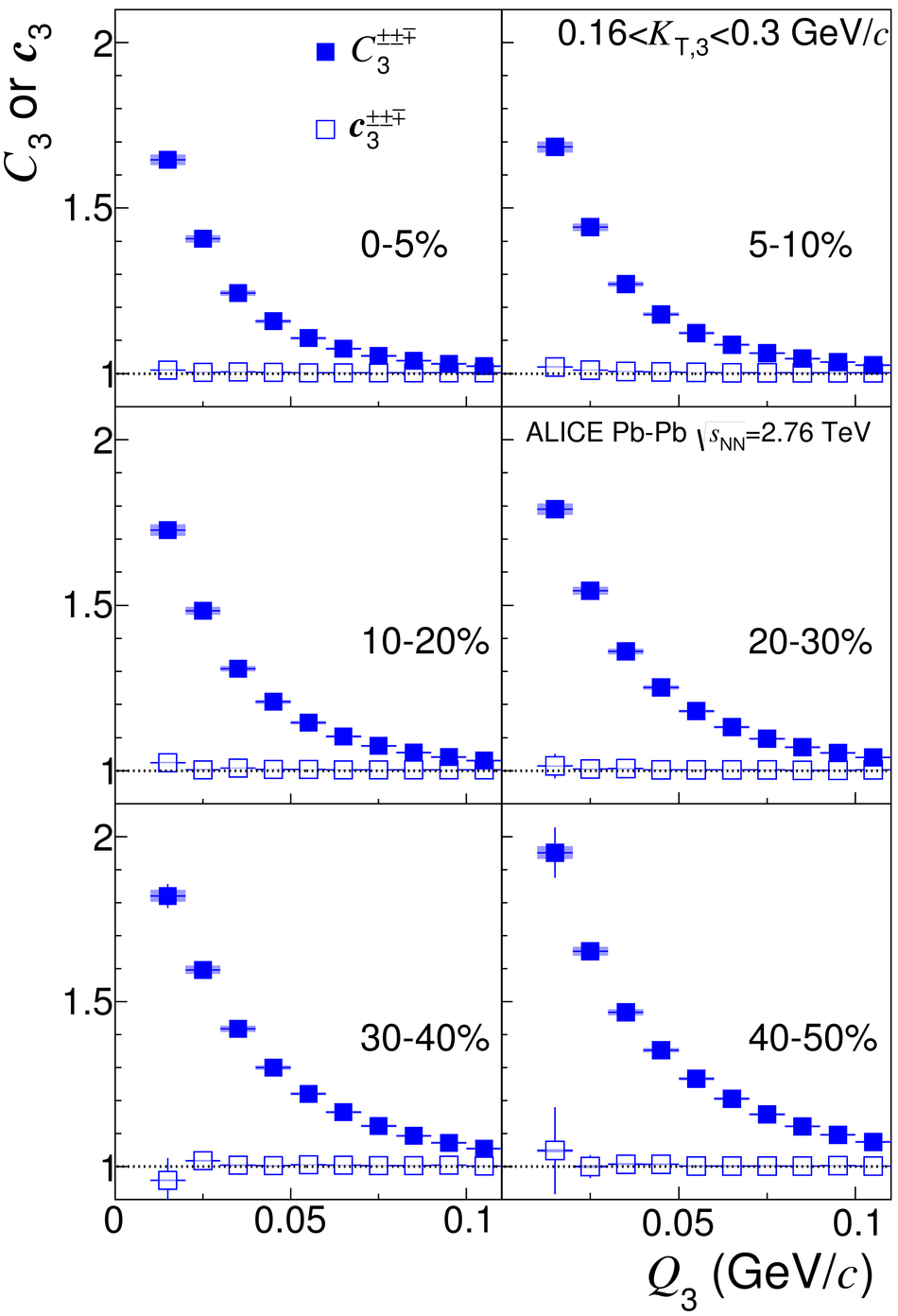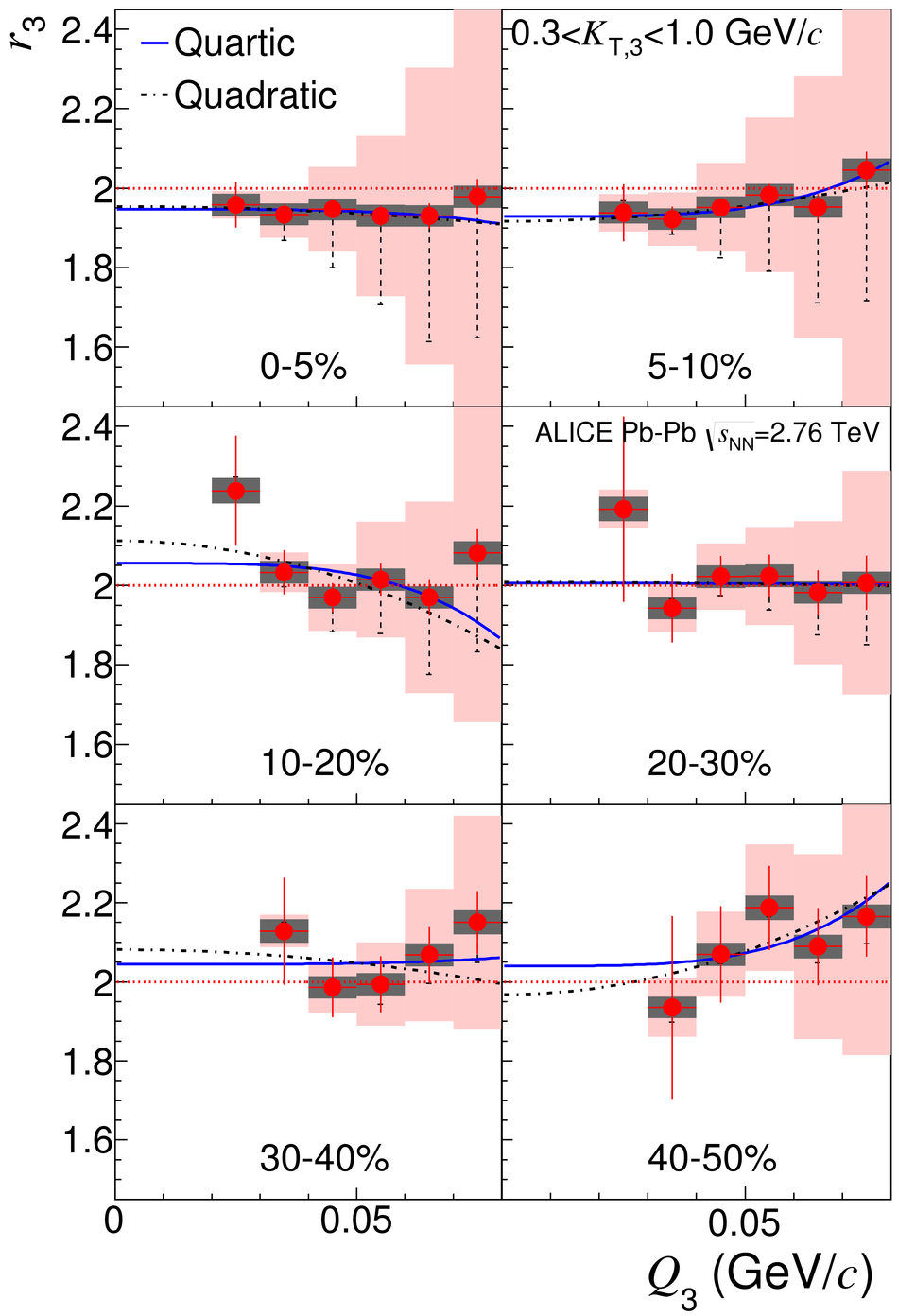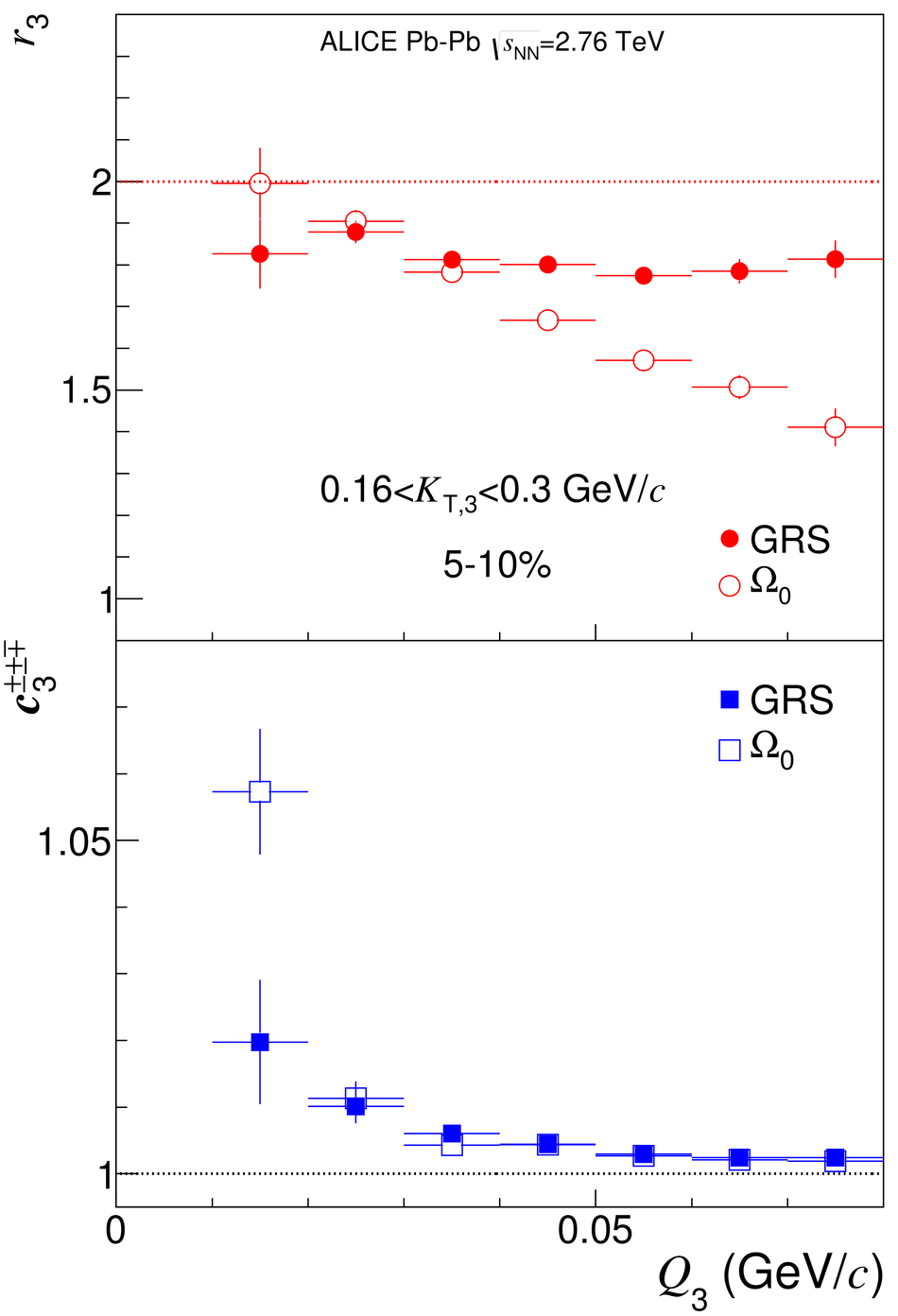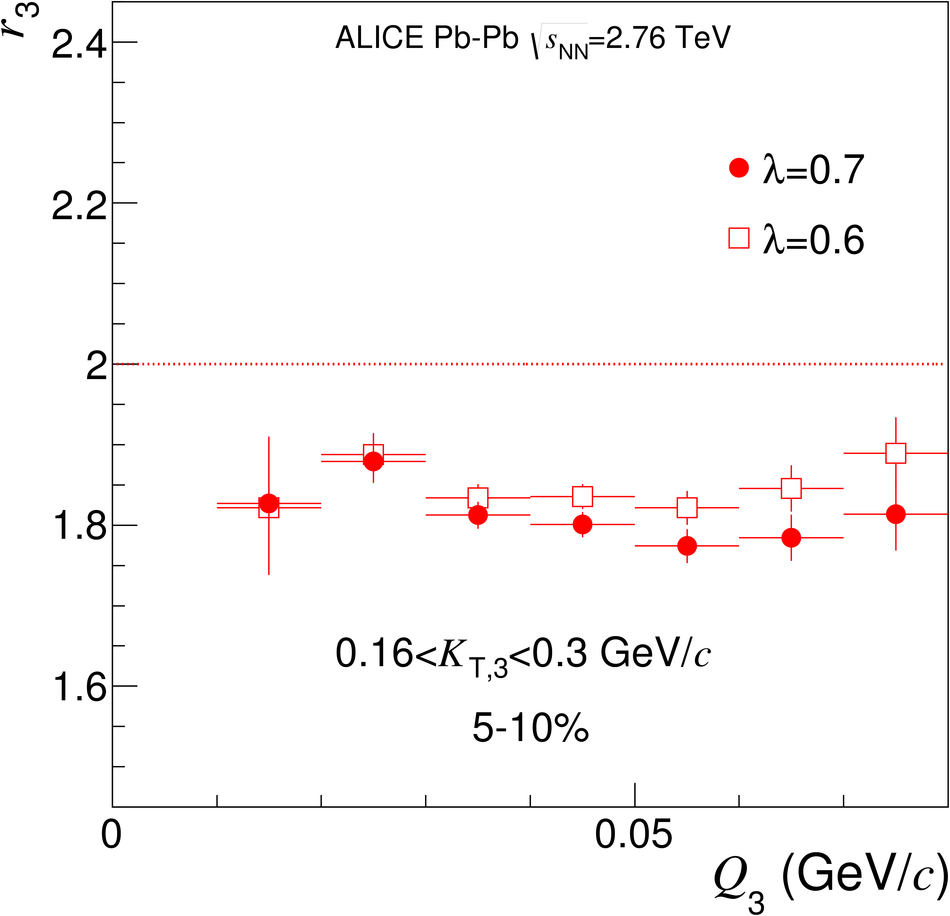Correlations induced by quantum statistics are sensitive to the spatio-temporal extent as well as dynamics of particle emitting sources in heavy-ion collisions. In addition, such correlations can be used to search for the presence of a coherent component of pion production. Two and three-pion correlations of same and mixed-charge are measured at low relative momentum to estimate the coherent fraction of charged pions in Pb-Pb collisions at $\sqrt{s_{\rm NN}}=2.76$ TeV at the LHC with ALICE. The genuine three-pion quantum statistics correlation is found to be suppressed relative to the two-pion correlation based on the assumption of fully chaotic pion emission. The suppression is observed to decrease with triplet momentum. The observed suppression at low triplet momentum may correspond to a coherent fraction in charged pion emission of 23% $\pm$ 8%.
Phys. Rev. C 89 (2014) 024911
HEP Data
e-Print: arXiv:1310.7808 | PDF | inSPIRE
CERN-PH-EP-2013-201

